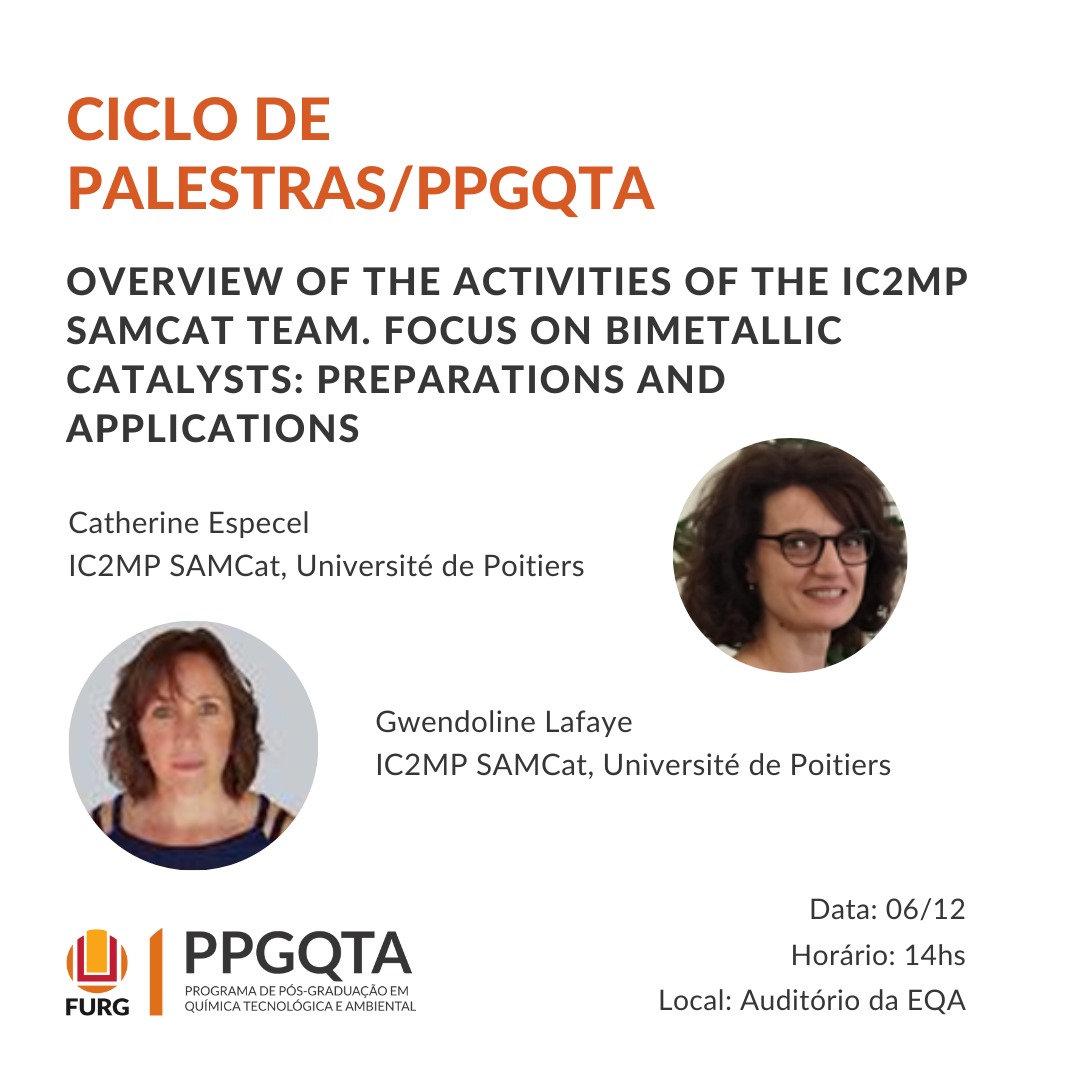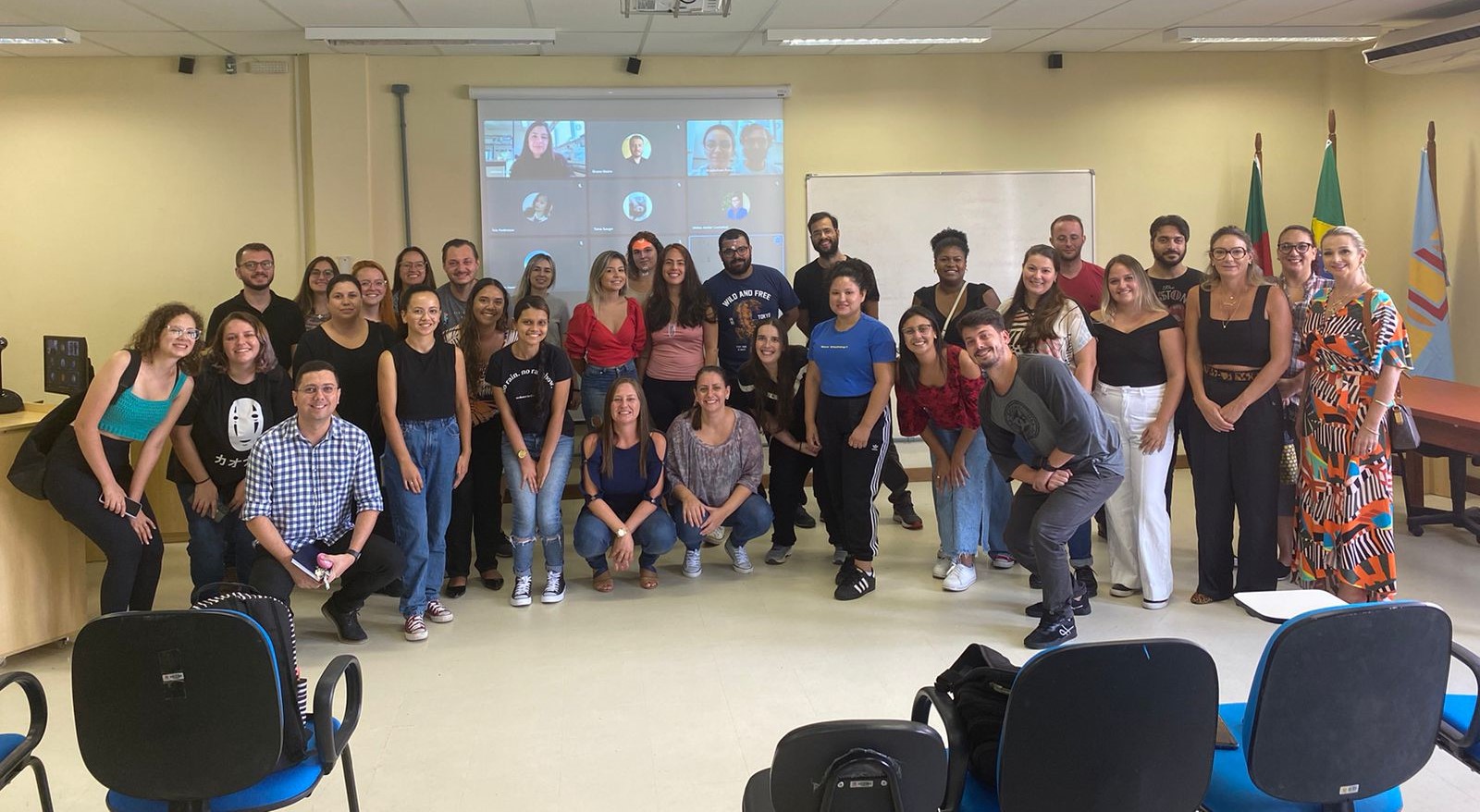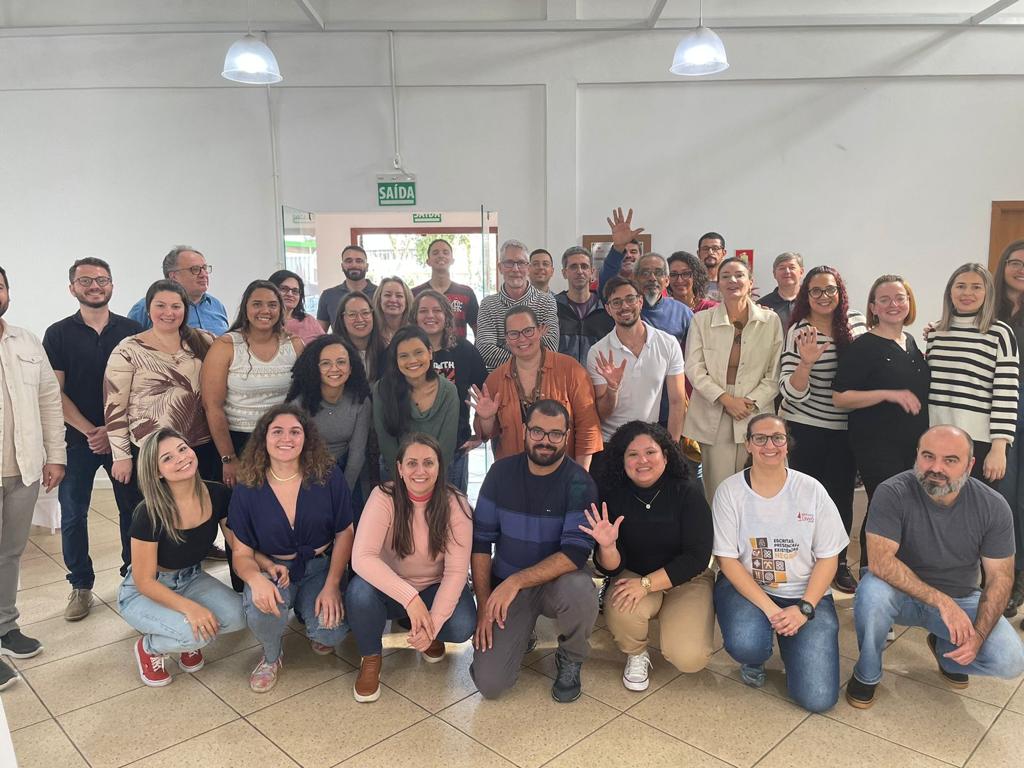O PPGQTA contada para palestra das Professoras Catherine Especel e Gwendoline Lafaye da Université de Poitiers (França) intitulada “ Overview of the activities of the IC2MP SAMCat team. Focus on bimetallic catalysts: preparations and applications”, que faz parte do processo de internacionalização do Programa, a realizar-se no dia 06 de dezembro de 2022, terça-feira, às 14h, no auditório da EQA. Essa palestra está sendo realizada em parceria com o Programa de Pós-Graduação em Ciência e Engenharia de Materiais (PPGCEM - UFPel)

Resumo da palestra:
After an overview of the activities of the SAMCat team from IC2MP (University of Poitiers), the preparation in our research group of various supported bimetallic systems for applications in the transformation of bio-renewable substrates and in energy will be presented.
The properties of bimetallic catalysts are significantly different from their monometallic analogues. Indeed, the modification of a monometallic catalyst by the addition of a second metal is an important approach for tailoring the electronic and geometric structures of the nanoparticles to enhance their catalytic activity and selectivity. In many cases, bimetallic nanoparticles have higher catalytic efficiencies than their monometallic counterparts, owing to strong synergy between the metals. Because of the presence of a second metal component, the complexity in preparing these materials increases, and in many cases it is the method of preparation which determines the final structure, and hence properties, of these materials. In our group we are developing methods of preparation by surface redox route allowing the control of metal-metal interactions.



